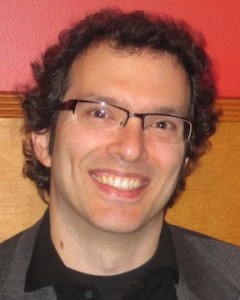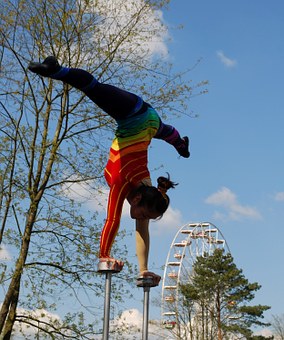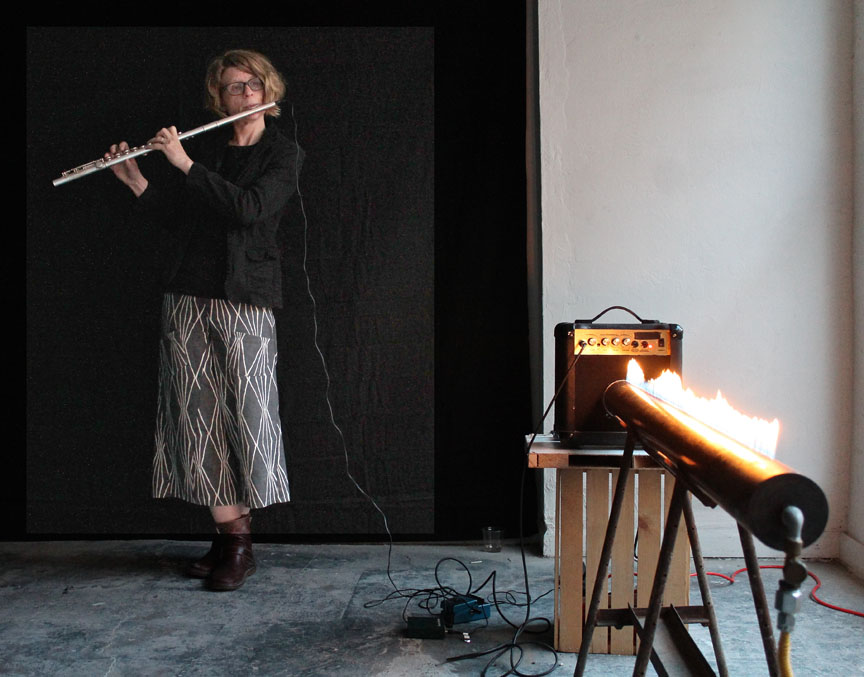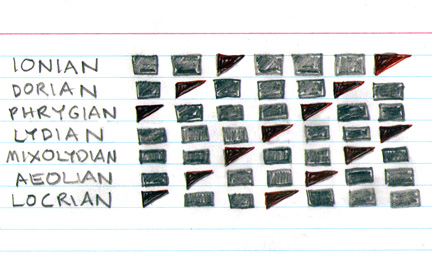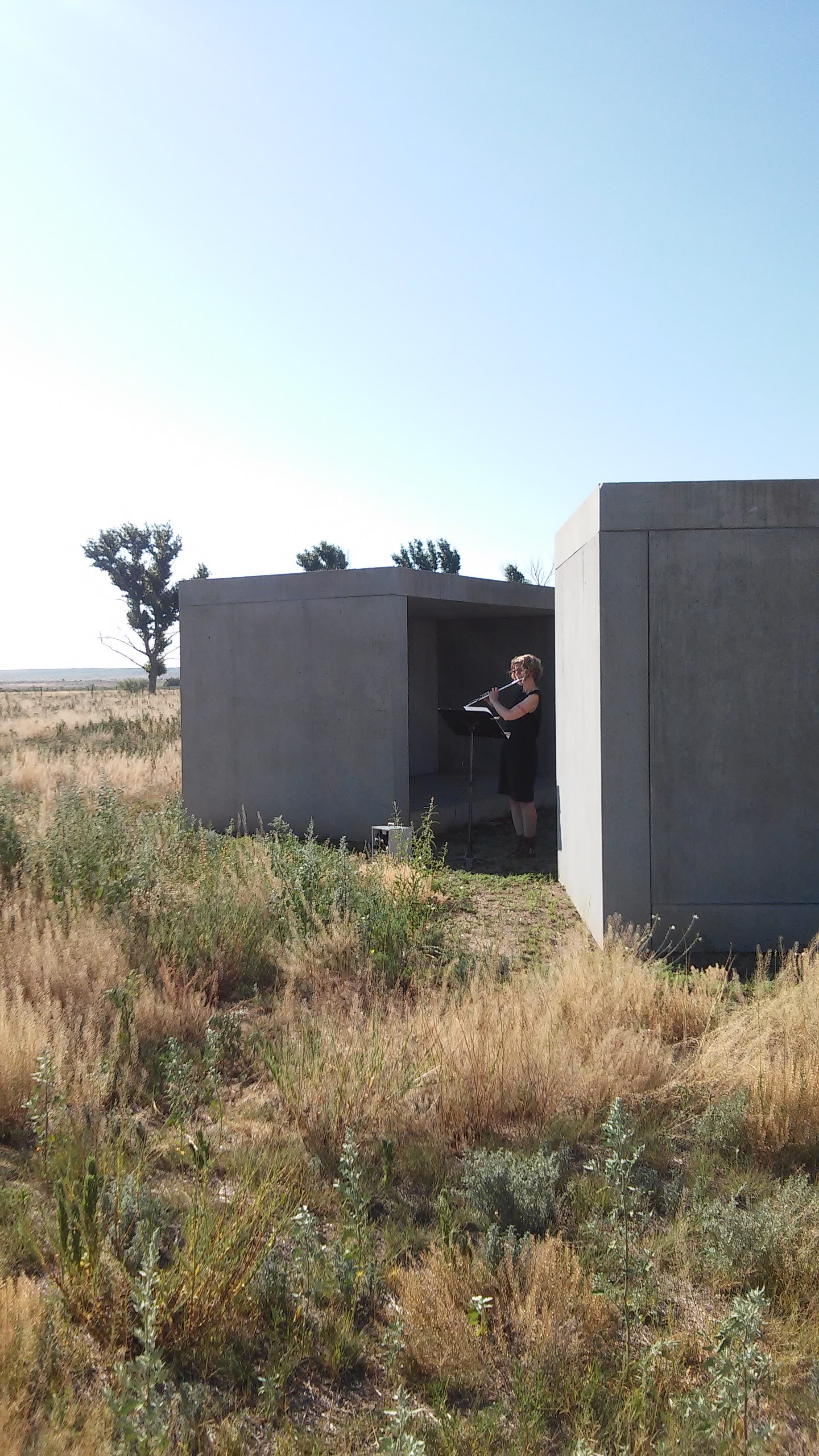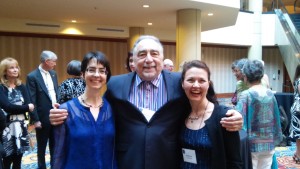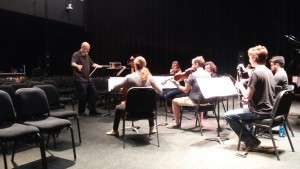After a bit of a break, New Music Pioneer is back! Today’s post is another guest blog from Andrew May, a composer, improviser, violinist, and computer musician who teaches at the University of North Texas.
For many years I have proposed to all who will listen that “it’s all music”: in other words, it’s at best wasteful, at worst culturally damaging to erect walls around differences of style, subculture, training, and technique. As I read various composers’ reactions to the Pulitzer Prize committee’s choice of Kendrick Lamar a year ago, a lot of the negative reactions clearly grew from this tendency to Balkanize musical culture. I don’t have much patience for that, and I was frankly disturbed by the suggestions of racial and cultural superiority I found in some of the comments. However, something more fundamental occurred to me as I read an insightful comment from composer and computer musician Eric Lyon: he observed that last year’s Pulitzer Prize award was remarkable not only because Kendrick Lamar is a rapper but also because he is a computer musician and DAMN. is a recorded work of computer music, created in the studio.
The Pulitzer prize is a prize in music, not a composition prize per se, but for most of its existence it was awarded to the composer of a particular work of music, and a document – a score – was the embodiment of that work. When the Pulitzer prize began, it was assumed that a “composer” was a person who conceptualized a musical experience and then communicated it to a performer or performers through a written musical score, and that the performer(s) would interpret the score in front of an audience in real-time to create an ephemeral shared experience in time and sound. Composers were valued for making up things the performers could not have come up with, which not only saved them time and labor, but also added value to the resulting experience. A score can have great utility value for musicians; the prize recognized people who created particularly effective ones.
Note that a score need not have notes! Even a traditional score of music typically uses words, at least, to clarify the intention, meaning, and character of the music notation. Music notation is a specialized language, fluency in which confers the status of “professional” musician within the traditional guild culture of concert music; it was another assumption of the Pulitzer that composers awarded would be part of this elite and circumscribed tradition, and that the awarded work would have a traditionally notated score. Of course, many modern “scores” consist entirely of words, diagrams, or images, and need not be written down at all. To be a composer, one must simply come up with an idea for a musical experience (whose details may be thoroughly worked out or deferred to the performers to some degree) and share it in a way that can be realized effectively; this notion of “score” applies to composed or directed improvisations equally well. From a design perspective, the score is an affordance that allows musicians to make better musical experiences in performance with less work. The value of an affordance lies in its utility and useability, not its cultural pedigree.
A recording is also an affordance, but a very different one. Its function is to allow listeners to reproduce a musical experience consistently, in any time or place, without need for performance or other human agency. Beyond their shared musical intention, the function of a recording really could not be much more different from that of a notated score. If you define workers by their products, the traditional composer and the computer musician are vastly different types of artist. Their processes converge at the beginning (imagination) and the end (aural experience), and in between they travel very different roads. The recording artist’s market is not musicians, but listeners. In fact, recordings don’t require any musicians to perform at all; there is plenty of “pure” electroacoustic and computer music generated entirely in the studio and existing only on recording. Most modern rock, hip-hop, and of course electronica recordings (who put up those boundaries? what are they trying to protect?) are fundamentally different from the “traditional” notion of a sound recording: they don’t make any claim to represent an actual performance, but are works created using the tools of the studio, layer by layer, process by process (the use of distinctly audible auto-tuning on vocal tracks is yet another reminder that the performance is not the product). The ideal concert performance of such works is a spectacle that embodies and amplifies the recorded sound through dance, lighting, sets, and projections; live performance, with all its uncertainty and imperfection, is in fact a detriment to the goal of reproducing the sound everyone in the audience already knows and loves from the recording. This is precisely how many live performances work, if only for practical reasons – it is much more reliable to lip-synch than to try to sing well in the midst of an elaborate stage show.
Like any dichotomy, the score/recording division is permeable, and one of the great innovations of the 20th century was the recycling of recordings into new performances, first using turntables or tape decks as instruments, and later using digital sampling. This practice of recycling and recombination of sounds is at the core of the modern computer music studio practices of rap and hip-hop. Likewise, the first Pulitzer for a work involving electronics was in 1970, long before computers entered the recording studio or digital sampling became a widely available technology; it was for Charles Wuorinen’s Time’s Encomium, which was also the first purely recorded work to be awarded (the following year the prize went to Mario Davidovsky’s Synchronisms #6, which includes a recording but still involves a performer interpreting a score at the piano in an ephemeral experience on stage in front of an audience). Wuorinen’s work, which was encoded onto punch-card “scores” that controlled the RCA Mark II synthesizer at the Columbia-Princeton Electronic Music Center, was a radical departure from tradition, but still a traditionally “composed” work – which happened to be written for a non-human “performer.” I can find no work of computer music created in the recording studio in the Pulitzer lists before DAMN. The culture of computer music as an experimental practice is still somewhat integrated with the culture of instrumental and vocal composition; their composers are trained in the same institutions, with the same basic curricula, and tend to wind up working in the same buildings and attending the same concerts. This diminishes the distinction between composers who create scores and composers who create recordings; but they are indeed different types of worker producing different types of product, and requiring fundamentally different skills.
Conflating creators of scores and creators of recordings as a single metier involves a “sleight of mind” no less intense than that of seeing three dimensions in a painting through the techniques of perspective. Instead of spatial depth, agency and communication are the dimensions inferred from the flat surface of a recording. We are used to hearing sound and inferring agents communicating with each other and ourselves; this is the basis of my own passionate pursuit of interactive computer music, in which agency is distributed, blurred, and confused between the sounds of live performers, algorithmic responses, and pre-recorded sounds. The composer, improviser, and trombonist George Lewis was one of my inspirations in this craft; I once heard him say, in discussing his work Voyager, that he was not particularly interested in sound. This was a deeply meaningful overstatement: it was the strongest way to get the point across that he was focused on agency, interaction, and community. The agency of performers communicating with each other in real-time is the heart and soul of traditional musical performance, and (alas?) if music is heard through speakers or headphones, it is no longer necessary. This represents a much larger difference even than the much-discussed dichotomy between the perspectives of improvisers and of composers of notated music; both are deeply invested in the cultural place of live performance, which has been terribly diminished by the trend toward private experiences of music on recording. This fact has transformed both the economics and the culture of music globally, and imperils the traditional role of not just composers, but performers and improvisers as well. It is no surprise if some musicians feel strongly around these issues.
Perhaps this offers a plausible window into why people of good will and cultural inclusiveness could still feel disturbed by the DAMN. Pulitzer. Such disturbance, however, is still probably misguided; the Pulitzer is a prize in “music,” and in our culture here and now, “music” refers to recordings at least as much as performances. In that wider context, there is a lot more work worthy of consideration than just the works of self-described “composers” of concert music. This is not the Pulitzer’s first crisis of inclusiveness, either. Improvised music long questioned the assumptions of the Pulitzer Prize committee, not only musically but also in terms of racial and cultural hegemony. A particularly tragic moment in this history was the committee’s refusal to award the prize to Duke Ellington in 1965. Pulitzers awarded to Henry Threadgill in 2016 and Ornette Coleman in 2007 were important steps toward proper acknowledgment of the art of improvised music: the performers’ freedom in creating these works was categorically different from any previous Pulitzer awardees (though there was certainly improvisation in Winton Marsalis’s Blood on the Fields). Not having been present in the studio as these recordings were created, I can’t say to what extent Threadgill or Coleman acted in anything like the traditional role of “composer”; but my understanding from the sound and the culture of these works is that the musicians realizing these works were communicating with each other in real-time, coming together to realize the music as a performance that was recorded, with the intention of honoring ideas expressed by the named composer through a combination of written and oral indications. The recorded performance was then transformed into an ideal representation of the work (through the usual techniques of mastering, at least, and possibly involving editing, overdubbing, or other standard procedures of the recording studio, but with the point of reference always being the recorded performance). It seems congruent, and somewhat reassuring, that these prizes, awarded to African-American musicians and building upon a tradition distinct from that of most earlier Pulitzer-awarded works, raised fewer hackles. Racism and cultural bias are real, but they may not be the primary issues in the DAMN. controversy.
DAMN. is a remarkable musical achievement, not just because of Kendrick Lamar’s skill in the rapper’s art of poetry in rhythm; as Eric Lyon observed, it is first and foremost the art of computer music that makes this record stand out. In this practice, even when material is recorded from a performance in the studio, there is no illusion that the performance is the product. Any given recorded sample may be used or not used, may be foregrounded or buried in the mix, may be processed out of recognition, may find its place in a very different context than it was originally recorded, and so on – the process of “composing” or putting together the work happens at the computer and the mixing desk, after the process of performance – or rather, as a particular and private manner of performance. In a live show, the performance is re-constructed and re-enacted, using the recorded tracks not only as points of reference but as material: most of the music heard behind Kendrick Lamar’s voice in concert is coming from digitally recorded media. The live performance, in this sense, is a celebration of the artist’s identity and of the recorded work created by the named artist and many others collaboratively in the studio – usually in several different studios.
The recorded work is itself the product of a community, not just an individual – in this respect it resembles the process of a piece written in score notation, which no one hears until a community comes together to reify it. DAMN. involved a substantial cohort of musicians (none of whom appear on stage in any of the videos I have seen from the DAMN. tour): no fewer than 11 producers, 10 additional vocalists, and 4 instrumental performers. This was not an ensemble, preparing the music together and then performing it in front of microphones; the process was one of overdubbing, looping, assembly, and intensive manipulation of time and sound at the computer. The ensemble is technologically mediated, and often technologically generated. This is entirely congruent with the experience of living in 21st-century America: we are used to technological mediation and displacement in our communications, and indeed we take it for granted. Even in the context of recorded music, the idea of several musicians in a room with a microphone overhead as they communicate with each other in real-time to make a recording is distinctly old-fashioned. In Kendrick Lamar’s live performances, most of the music comes from digital media, but he is very much present in real-time on stage (and reproduced larger than life on screens), rapping live with accompaniment from digital media based on the studio recordings, amplified and contextualized by an intense multi-media experience including multiple screens, set pieces, costumes, digitally controlled lighting and pyrotechnics, and in at least one case martial arts performance. It is effective use of technology to contextualize, support, and enhance one man’s intense communication of personal and psychological experience.
The technology used in the studio to create these recordings is likewise appropriate to the purpose; it is skilfully used to manipulate words, identities, beats, and instrumental harmonies in a way that questions, intensifies, and contextualizes the personal and psychological experience embodied in the words. In fact, I agree with many others who have pointed out that To Pimp a Butterfly goes even further down this artistic path; but both albums grow from the techniques of the studio, and their manifest strengths are intrinsically connected to the subtle and imaginative use of that environment. Further, the studio recordings are the urtext for the performances: there is no set of written documents from which any other performers, now or in the future, could meaningfully create the musical experience of DAMN.
Recordings have been with us a good century now, and they have changed the culture of music globally, categorically, and irrevocably; Jacques Attali’s Noise: The Political Economy of Music is a great analysis of this (even if you don’t buy into the notion that musical originates as a “simulacrum of ritual murder”). A lot of performing musicians, myself included, are deeply saddened that this cultural transformation has caused the majority of people’s musical experiences nowadays to be private, technologically mediated, and infinitely reproducible (i.e. listening to recordings on earphones) instead of communal, corporeal, and ephemeral. Our sadness doesn’t change the facts on the ground, and most of us put up with the need to document our work as digital media, if only as a means of publicity. We are all computer musicians now, to coin a phrase.
Recordings have also changed the nature of the score. I have observed many composers – including some very good ones – notating instrumental effects they have heard on recording, and often expressing some consternation when they don’t sound right on stage. It is, of course, because the sounds they heard and loved were created in the studio (close mic recording, compression, filtering and reverberation produce electronic versions of acoustic sounds that cannot be reproduced in a purely acoustic performance). Certain kinds of coordination and synchronization of events and rhythms that can be easily generated in the studio turn out to be impossible to realize in performance (without the intervention of a click track, which presents its own host of issues). Tempi and patterns that sound gorgeous in an audio sequence may prove impossible to realize reliably in real life. Even when these problems are negotiated and the work is performed, often composers are as focused on the documentation as they are on the performance – which is only natural, in fact – the performance happens just once and is often ill-attended, while the document can be shared widely and repeated infinitely on line. A student I was working with recently proposed using a recording as a score, which the performers would study by listening and imitating. I myself did just that in Recyclers, a 2009 work based on mockingbird calls.
All this leads, first of all, to the conclusion that some composers who resent Kendrick Lamar’s Pulitzer success might do well to recognize that it is (among many other things) a just and appropriate acknowledgment of the fact that the culture has changed, and the traditional role of composer as producer of written documents to be interpreted in live performance is essentially anachronistic. As a musician trained and active as a composer in this traditional sense – loving that art with all my heart and soul – I recognize this with a great deal of sadness, but sorrow is no reason to deny the obvious. The cohort of performers who engage seriously with newly written scores is diminishing, and their professional opportunities are diminishing even faster. The relationship between the subcultures of performance, improvisation, and composition (which should never have been separated in the first place, but that’s another story) is rife with problems: mistrust, disrespect, misunderstanding, absence of common cause, disparate terms and assumptions, failures of communication, competition for diminishing resources, and so forth. For myself, I consider it important to work through these problems, and to find productive common ground with the most dedicated performers I can find. No matter how successful we may be, however, I have no expectation that anything my colleagues and I can do will bring notated music back to its past place of glory in our musical culture – and indeed, why should it? I am fundamentally content with the situation; I make music for love, not for wealth, power, or authority.
A second conclusion also arises: it might make sense for those who wield the emblems of wealth, power, and authority to be as clear as possible about what they are awarding and why. There is a legitimate difference to be found between music that exists primarily on recording (a context in which Kendrick Lamar has been widely and justly awarded already) and music whose meaning arises from performers realizing shared ideas in live performance. I think many composers who were nonplussed by the 2018 Pulitzer – even those who truly don’t believe in the supremacy of the traditionally white, male, Eurocentric world of notated concert music – rightly see a different between the now-hegemonic vocation of the creator of recordings and the now-endangered vocation of the creator of notated scores. If the affordance of the score – or indeed, that of the concert hall – is still is seen as having some value, there probably should be categories of award in this realm that are distinct from those for recorded music. If creators of recorded works wish to be called “composers,” my response is delight that the culture of the future looks for validation in the anachronisms that I love; it makes me feel less alone and irrelevant. It is, for all that, a different craft – no less difficult, subtle, or valuable – just different.
The notated score is an affordance that encodes and shares meaningful information in unique and wonderful ways. So too were cuneiform tablets, parchment scrolls, wax cylinder recordings, mimeograph machines, manual typewriters, sextants, and slide rules; they were all lovely, but their time has come and gone. Damn! Perhaps music as we used to make it is dying or even dead; nevertheless, long live music. We may mourn the loss of the old ways and still celebrate together in the present. After all, when we express our experience and share our consciousness by playing with time, sound and silence, it’s all music.
